Storing Energy: Watt does the Future Hold?
This week, should your house have a battery, the abandoned gold mine that's now pumping out power, and will your fridge talk to the grid in future to better manage your energy consumption? Continuing our theme of alternative energy, we turn to the questions of energy distribution and storage. Plus, why tyres may be worse for your health than exhaust emissions, will the 4-day working week work, samples from an early asteroid, and where chickens came from...
In this episode
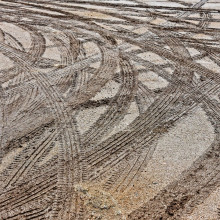
01:04 - Tyres worse polluters than tailpipes
Tyres worse polluters than tailpipes
Nick Molden, Emissions Analytics
Bad air sits at the top of the league tables as a leading cause of ill-health internationally. And a lot of air pollution stems from road traffic. Notoriously, it’s the fine particles in exhaust smoke that are responsible. In recent years though, significant pressure has been brought to bear on vehicle manufacturers to clean up their emissions acts, and, at the same time, some areas have introduced emissions control zones, like the one in London, that penalise polluting vehicles and drive them off the streets. But, as these measures take hold - and especially as we switch to electric cars - there’s one form of pollution that’s rapidly becoming the elephant in the room, flying straight under the roadside radar and slipping unnoticed into ultralow emissions zones: the particles that rub off your tyres. These, research suggests, can be just as bad as exhaust smoke. They’re also present in massive amounts, as Nick Molden, the CEO of Emissions Analytics, explains to Chris Smith...
Nick - So I did some calculations and you very quickly realize you were talking about hundreds of thousands of tonnes of material being shed every year across, say, all the vehicles in Europe; in the world, there's about one and a half billion cars. If they are shedding, even relatively small amounts of material, that adds up to very large amount. The regulators have got on top of tailpipe emissions, but it doesn't mean that cars don't have other sources of pollution. Brakes is one, but the one that we think is the biggest and growing is tyres. What is most important for us to think about, and regulators to get their head round? It is now tyres, not the tailpipe!
Chris - Do we have any feel though for the relative nastiness of emissions from tailpipes versus tires, because we've got quite familiar with what these small particles are, how big they are, which are the worst ones, what sorts of impacts they have on human health when we breathe them in. Do we have any data on what comes off of a tire and in what sort of quantity and what its link to disease risk is?
Nick - There's a certain intuitive understanding that or belief rather than understanding that tires are largely made up of natural rubber. And because that's natural, that can't be that bad. Well, it turns out, particularly in car tires and van tyres, this is not true. Actually, natural rubber makes up a pretty small proportion, maybe a quarter maximum. Most of it is synthetic rubber derived from crude oil. And that brings us to a really interesting parallel with fossil fuel vehicles in that we are using derivatives of crude oil to create the tires. And so the pollutants coming off tires are, in a way, you know, cousins of what's coming out of the tailpipe. And so we are seeing a lot of the same common compounds. And one group, particularly to flag is what's called aromatics. Many of them are carcinogenic to humans. If we compare across the hundreds of tyres we've now analysed, that proportion of aromatics varies between about 25% at the low end to 80% at the high end. What that says to me is, one, those are high figures anyway, across the board, but also that they vary hugely from tire to tire.
Chris - The thing is, Nick, the mere fact, they are, there is a bit like me saying, well, I know there's some asbestos in the building that I'm working in. But as long as I don't fiddle with it, I'm quite safe. If the carcinogen stays in the tire or stays on the road surface, that's not in theory, a threat to my health, is it? So have we got evidence that this is coming off the tire and potentially exposing people and therefore increasing their risk of onward disease?
Nick - So there's three directions. These particles take. The smallest ones make up about 11% of the mass and they will hang in the air for quite a while and are subject to human inhalation. They are sufficiently small to transfer into the blood and potentially into the brain. There is now a reasonable amount of evidence that that's not a good thing. But what happens to the other 89%? Our estimates say that ,probably, roughly equally that is split between it going into the water and into the soil, which then can find its way into the food chain. If we just think a bit more about the marine direction, the research is at really early stages at the moment, but the one notable thing that's happened recently in America, they have linked the effect of one compound from tires, which only comes from tires to the deaths of salmon and now to breeds of trout as well. Now I know that's fish, not people, but that gives us sufficient. Cause to think there's enough reason to believe there's a risk that these aromatics will be getting into humans.

06:25 - Is the 4 day working week feasible?
Is the 4 day working week feasible?
Brendan Burchell, University of Cambridge
5 days a week, 9 to 5 - that is the employment pattern most jobs have adopted ever since its introduction in the 1920s. In the century that's followed, productivity has soared but working hours have remained the same. And with the pandemic provoking many to reconsider their priorities in life, old working patterns have started to be questioned. Can employees maintain 100% of their output for 100% of their wages but work 80% of the time instead? That is the hypothesis being tested in a new trial which began for some UK businesses this week. Julia Ravey spoke to Brendan Burchell, from the University of Cambridge, who is monitoring the trial data, to find out more…
Brendan - We've got a big trial in the UK. It's following the model in other countries. We've got 70 employers covering about 3000 employees who all are going to go down to a working time reduction model. Typically it'll be a 20% reduction in their working week while aiming that people shouldn't get a pay cut and will be just as productive as they were before. They'll be doing the same amount of work, but working smarter and getting it done by Thursdays, so they can have a three day weekend.
Julia - So you're getting a bit less time in work, but the expectation is to have the same output. Is there a science behind that being possible?
Brendan - We've got some experience of other organisations who have experimented with this and overall, the results seem to be very positive. People really enjoy having that extra leisure time. Being able to have a more relaxed weekend, being able to do things in their own time and realising that there are ways in which they could work more effectively. Whether it can work in all situations, how we need to tailor it to different situations, what sort of mentoring and assistance we can give to organisations; those are still open questions and we'll know the answer to lots of these things in six months or so when the trial ends.
Julia - And how are you going to monitor the success of the trial?
Brendan - We're taking lots of different measures. But for instance, for productivity, we rely on organisations to define the output themselves. What is the most important output they want? Is it to do with the profit? Is it to do with the quality of their service? We'll use their own metrics. We'll also be looking at the employee's wellbeing, looking at their mental health, and also trying to get some indication of the carbon footprint that we are hoping is going to be improved by these changes to people's working lives.
Julia - Was this an opt-in process?
Brendan - It was, and there's been publicity around a small number of organisations in the UK that have done this. It's interesting just how much interest this has had both from employees, but also from employers.
Julia - On the employer side of things, I was surprised that so many were keen on it. Have any had the attitude of "if my employees can do it in four days, I should just pay them for four days"?
Brendan - I haven't come across that. Again, they're all different. Employers tend to be very proud of what they're doing and want to work with employees on this, that's the impression we're getting from talking to the employers anyway. Sometimes it's because they want to recruit and they were finding it difficult to recruit and thought that would be one way that could really attract the best talent. In other cases, it was because they were particularly in the business of welfare. And in some cases, the profit motive wasn't the main thing that they were interested in. They were more interested in their service to the local community and in how they treated their employees.
Julia - This type of trial can apply to many different industries. Are there any industries which would struggle to adopt this? I'm thinking like the healthcare industry, because at the minute, in the UK at least, we're massively understaffed with healthcare. Would we have to up the staff numbers to maintain this type of model?
Brendan - Certainly there are some sorts of employers that can do it more easily, that's our experience so far. Particularly when you've got professionals working quite autonomously like architects or people doing programming. And often people's initial reaction when I tell them about this is "well, you couldn't do it in hospitals", for instance. But of course, when you think about it, hospitals, typically in some parts of them anyway, do run 24/7, but nobody's expected to be there for the whole time. You are trying to run a seven day service using typically people working five days at eight hours a day. So it's actually relatively easy to think how you'd modify that. As you say, there are recruitment problems and staff shortages in lots of parts of the UK economy at the moment. There's also lots of people who I think would be better off if they had some work and if work was made available to them, instead of only in a full-time manner, but where they could get good quality jobs, that would also allow them more time off to do whatever they want to do. So if we can provide work to people that allows them a better work life balance, then I'm hoping that we get a lot more people who are currently out of the labour market into work.
Julia - Are you working a four day week at the minute?
Brendan - No, I reduced my hours down to three days a week, that year and a half ago with the university. I definitely have been enjoying a slightly more relaxed pace of work, spending a lot more time with my grandchildren. Yes, I definitely recommend it.

12:05 - Making Smoking Obsolete by 2030
Making Smoking Obsolete by 2030
Linda Bauld, University of Edinburgh
The UK government have pledged to stamp out smoking by the year 2030. Smoking causes premature deaths of millions world wide every year. And in the UK the death toll is equivalent to a jumbo jet crash every day. This week, an independent report was published by former Barnados Chief Executive Javed Khan looking at what needs to happen to realise this goal of a smoke free country within 20 years. Speaking with Chris Smith, Edinburgh University’s Linda Bauld, whose own work looks at this same topic...
Linda - Chris, I think the way to describe this is, it's the last big push. So if you think back to the 1950s, we had over 80% of men who smoked, we be got up up to about just under half of women in the 1960s. And now we've got the second lowest rates in Europe. So smoking is concentrated in particular groups and what they're effectively recommending, he's got 15 recommendations, there's quite a comprehensive approach. And it has elements that are around prevention, raising the age of sale every year. So that means that at the moment it's 18 and it would gradually become even older in terms of when people would be allowed to smoke. And then they're also looking at investments in services, in vaping as an alternative for smokers, looking at pregnant women looking at a mental health and smoking really importantly. So a whole variety of really quite ambitious measures to try and get us over the line to 2030.
Chris - We'll, come on to some of the specifics in just a second, but is there any evidence that packages like this actually work?
Linda - There is actually. So, in 1962, the Royal college of Physicians produced "Smoking and Health", which set out a package of measures that should be implemented. It actually took 50 years, but as they were implemented in stages, and that meant raising the price, banning marketing, offering people support, when you change the environment and you change behaviour together over time, it really does have an impact. And in fact, smoking is probably the best example in public health of a comprehensive approach and things acting together. So, you know, I, I don't know whether much or any of this will get implemented, but if they actually did implement it, I would be really quite confident this would be adding to what we already have and make a real difference.
Chris - Playing devil's advocate though for second, Linda, heroin is universally illegal and there's no age at which that's considered acceptable. Yet we have unfortunately, a steady stream of victims every year. And young people join that list of victims every year, despite many of the measures being in place that you've already mentioned. So what's the evidence that we'll crack down on smoking and get that last about 15% of people who do smoke with these measures, if we can't do it for something as severe as heroin addiction?
Linda - Well, they're very different drugs in different ways. And also the drug death issue has actually been getting worse. Whereas what you've seen in tobacco control are consistent improvements. And I think there are a couple of things there. The first thing is that it's uniquely harmful and people know the risks and also it's been de-normalised. So gradually it's just become less acceptable to smoke. And then importantly, there are also alternatives that people have in terms of nicotine replacement therapy, which some people - actually a committee I chaired for NICE said you could use it for life if you wanted to. So I know people who are still using NRT lozenges, and they stopped smoking 10 years ago. So nicotine is not the problem. We don't need to abandon the actual drug that's addictive, cuz it's not causing harm. It's the burning and the tobacco - also oral tobacco - that causes the harm. So I think it's quite a different scenario.
Chris - And just in the last half minute or so, one of the recommendations is let's offer people vaping as an alternative. Is that not possibly substituting one poison for another though?
Linda - Well, vaping is not risk free and it's really important to emphasise that. But the thing I come back to the burning Chris, smoking kills one in two of its regular users. In fact, two and three of its regular users when used as intended while vaping has a very small proportion of that risk. We don't have the long term data, but for smokers, it's definitely the better option. The challenge of course, Chris, is to keep it outta the hands of non-smokers and young people because we don't know long term how it might affect them.

17:07 - Where did domestic chickens come from?
Where did domestic chickens come from?
Julia Best, University of Cardiff
Earlier studies on the modern chicken, Gallus domesticus, had claimed it originated some 10,000 years ago in China and South East Asia, with the earliest European chickens supposedly dating back 7000 years. Now, scientists around the world have been collaborating to put this claim to the test, and have found that certain samples had been inaccurately dated by thousands of years, meaning chickens are actually much younger in evolutionary terms than we first thought. The two studies, published in the journals Antiquity, and The Proceedings of the National Academy of Sciences USA, were carried out by academics at a number of universities around the world including Cardiff, where Julia Best is based. She told James Tytko what they’ve found...
Julia - The methods that have been used prior to our studies to assign the age to these chickens have been indirect. That means they've been associated by the archaeological context in which the bones were found; things like types of pottery, coins, things that can give us an approximate date. One of the methods we used is radiocarbon dating, which is a direct form of dating; analysing the levels of unstable and radioactive carbon 14 present in the ancient chicken bones. That rate of radioactive decay gives us as archaeologists a ticking timer to measure.
James - And what sort of errors were you able to rectify with this much more accurate dating technique?
Julia B - One really good example comes from Bulgaria where a specimen was thought to be about 7,000 years old. But when we did radio carbon dating, it was actually revealed to be less than a hundred years old and it was a modern intrusion. Other ones were still ancient, but were much more recent than previously thought. For example, maybe being Roman and medieval in date, rather than much earlier such as bronze age or iron age.
James- That's incredible how far wrong that previous dating was to me. Can I move us on to think about what we know about when chickens were first being domesticated, what their evolutionary ancestors may have been and what instigated people taking them into their homes and communities?
Julia B - The theory we are putting forward at the moment is that it may have been to do with rice cultivation. As cereal crops start to be domesticated in this area, such as Thailand, what we are seeing is a really nice correlation between the date of this crop domestication and the date where we're first seeing chickens in the archaeological record. So, maybe the clearing of jungle areas for rice cultivation fields could have created an appropriate environment for the red jungle fowl, the chickens ancestor or primary ancestor, which could have then been attracted into the human niches based on the availability of food among other things.
James - And when we start to see chickens coming over to the West, firstly, when? And secondly, are they coming over the animal that we now view as a common source of food, whether for their eggs or for their meat, or were they coming over in a different capacity?
Julia B: - We now think that they did not arrive in Europe until the first millennium BC, probably about 800 BC. So, out of the 23 bones that we radio carbon dated, 18 of them were much more recent than had been claimed. So now that we can rule out those intrusive chickens, we can get a better understanding of what people were actually doing with them and how they were interacting. Let's take Britain as an example for now, when these animals first arrive chickens do not seem to be primarily considered as food. The earliest chickens that we have in Britain are buried alone in pits. They're whole animals, they're not butchered. And they seem to have lived quite a ripe old age. This indicates more that they have a special status. Maybe they're considered exotic. Maybe they are a status symbol and they might also have ritual religious connotations. It takes perhaps up to 500 years from a chicken's first appearance in an area for them to be more considered as a common food.
James - That's really amazing to me. They're first viewed as these interesting exotic animals. Do we have a sense of what changes the chicken has gone through since it was first domesticated? Because it strikes me that the modern chicken serves a lot of purposes for humans as they currently are, which may have not been so useful in the wild being such efficient layers of eggs, for example, or having such meaty flesh.
Julia B - Exactly. That is a really important change. Some of the early changes may have been to do with their outer aesthetic: what they look like. But some of the key changes you pick up on there are things like the ability to lay frequently. We know that it must be quite soon after chickens are domesticated that they have the capacity to lay regularly, but we don't know whether that was actually selected for until much later on. So maybe things like egg laying weren't the most important to begin with.
James - Chickens are obviously such a hugely culturally significant animals, it seems pretty much all across the world. That's maybe even more apparent now that they're becoming more expensive thanks to a variety of factors...
Julia B - Of course the more we learn about animals and where they came from, how they were domesticated, and how we've changed them, that can feed into things such as looking forward to sustainability. Things like avian diseases, thinking about how we interact with our food animals. And, of course, that's a really contemporary key theme: how we get our food, food miles, consideration of animal human relationships. So I think it provides a great lens to look at both modern society and ancient society.

22:26 - Ryugu asteroid sample analysis
Ryugu asteroid sample analysis
Trying to unpick how our planet began to form, and from what, over 5 billion years ago sounds like an impossible undertaking. But, by studying the “leftovers” from the process of planet formation in the early solar system, we can decipher what the conditions were like and what materials were there at the time. The problem remains where you get that material! But, this week, this cosmic detective story took a step forward with the publication of analysis of samples collected from an ancient asteroid called Ryugu by the Japanese Space agency, JAXA. Samples brought back aboard their Hyabusa 2 probe are now being studied. Chris Smith asked Open University space scientist John Zarnecki to bring him up to speed with what the results are revealing…
John - This mission - Hayabusa 2 - is from JAXA [the Japanese space agency] and it was their second asteroid return mission. These are very demanding and challenging, but both of them have worked and have returned samples to the earth. Now, in the case of Hayabusa 2, it was launched in 2014 and returned with its samples in 2020. And the total amount that was collected was about five and a half grams! You might laugh at that, but, actually, five and a half grams is a lot more than they expected. And, these days, with the incredible analytical equipment that we have in, in laboratories on the earth, you can do an enormous amount with small quantities of material.
Chris - The paper's got hundreds of scientists on it. They,
John - Yeah, I, I tried to count Chris, and I made it 149. <laugh> right. And from 65 different laboratories on four continents. And I mean, that in itself is interesting. That shows you the nature of much of science these days; a lot of science is done by large teams, collaborating internationally, bringing different types of expertise to bear.
Chris - And what has this pretty substantial team demonstrated with this paper? I mean, what are the key findings?
John - There's a couple of things that stand out to me. First of all, it's ironic that it's actually saying in some ways more about material here on the earth than on this particular asteroid. We have thousands of meteorites in various collections on the earth and they fall into different categories and there's one particular category - And there are only a few of this type - they're called CI meteorites - and they are thought to be the most primitive with material representing that, that existed very, very early in the life of the solar system, four and a half billion years ago. One of the reasons this asteroid was chosen as a target is that it's thought to be a primitive asteroid. And the first analysis, published a few months ago, sort of confirms that, that seems to be the case. Now in this paper, this large group analysed the material and compared it with the samples that we have in the meteorite collection. And they found that, broadly speaking, the material was the same, but there were some significant differences. Now we always worry with meteorites to what extent are they contaminated by, in many cases, sitting on the earth for tens or even hundreds of years. This paper is really showing, this is what this material should look like. And anything more that we see in these, uh, samples on the earth are due to contamination.
Chris - What really struck me when I read this paper and I'll quote from part of the introduction, they say the samples consist predominantly of minerals formed in aqueous fluid - in other words, water - on an apparent planetesimal - a planet that was trying to form - the primary minerals were altered by fluids at a temperature of 37 degrees C give or take and have not subsequently been heated to more than a hundred degrees. I mean, that's amazing detail to be able to say about what this asteroid was going through about 5 billion years ago!
John - That is the power of what, what is often called cosmo-chemistry. They can look at the details of the mineralogy, the crystal structure from that. You can decipher the formation conditions because you know certain compounds will only form under certain conditions of temperature and pressure. And that's the way in which you can do this detective work. You can essentially map out the conditions that existed in at least one part of the early solar system. It's staggering, yes.
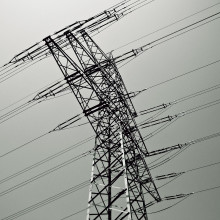
28:30 - Integrating alternatives: powering the future
Integrating alternatives: powering the future
Simon Harrison, Mott Macdonald
The world needs ways to make metaphorical hay - electricity - when the sun is shining, store it, and then redistribute it efficiently when we need it. We have multiple challenges standing in our way for this happen; ranging from economic systems and government policies, to smarter technologies and perhaps even new ways of working or organising our lives. Simon Harrison is an electrical engineer and head of strategy for the engineering company Mott Macdonald...
Julia - Simon, this is not just a case of putting up more wind turbines or solar panels, is it?
Simon - No I'm afraid it isn't. Those are component parts of an energy system that we need to decarbonise globally by 2050. That's not very long away, it's only 330 months I calculated. We have to do that affordably, we have to do that in a way that is resilient and reliable, and that's a massive challenge. So that's not about picking a few technologies and deploying them. It needs an approach that considers the energy system as a whole, at a strategic level. We have to worry about economics, policy, technology, networks, digital markets, supply chains, regulation, how efficiently we use energy and how we behave. At the same time, we have to think about that at all scales; national, regional, city, community - they all have different parts of play. And we have to make all of that fit together in the best way that produces an affordable answer for you and me.
Julia - It sounds like a lot of steps to consider. So what is the order in which we need to put these things in place?
Simon - The issues that drive all this I think are pace and scale. There's a lot of discovery involved because we don't yet know all of the best answers even though we probably know most of the technologies and we need to test and deploy multiple approaches at scale, we can't assume that we make a policy based on something working. There may be all sorts of issues as to how much things end up costing, whether there are supply chains that can produce things at scale, and how that's working out around the world. We need to learn fast, change our approach, and then scale again. There are some clear immediate needs. We need a policy environment, a digital backbone on what I would expect to be a much more digitalised system, and support for innovation, both at big scales, things like better nuclear or offshore wind, and innovation at perhaps much more local scale about how energy needs to be better integrated locally.
Julia - And we're currently in this cost of living crisis. So all of these interventions that are needed in the future, they sound great, but are probably very costly. Is this going to be cost effective down the line?
Simon - We have to decarbonise by 2050. If we don't do that in a thoughtful, planned way that thinks about the system as a whole, it will end up costing a lot more money. So this will cost money, but this is about spending as little money as we have to to achieve the end goal. If we don't take a system's view, we'll make far more mistakes, we'll have to rectify things later or alternatively, we might well end up missing the target. If we find out how to scale new approaches, costs tend to come down dramatically and the evidence from say solar and wind is very much the case. Both of those are much, much cheaper than they were 10 or 15 years ago.
Julia - So with these interventions in place would the hope be that prices of electricity will be more stable in the long run because we have these storage systems?
Simon - An energy system based on a much broader mix of sources, including much more renewable energy and appropriate and well integrated storage and smart end use using energy demand as something that can be varied as the wind blows and the sun's out, all offers opportunity to a much more price stable energy system in the long term. Although none of these things will have a big impact on prices in the short term, unfortunately.
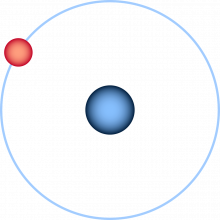
33:11 - Hydrogen as an energy supply
Hydrogen as an energy supply
Dave Ansell
When it comes to storing energy, it need not be stored as electricity, although advances in battery technology mean that is becoming more practical, as we’ll hear later in the programme when we talk about the rising trend towards installing domestic batteries to power our homes. One alternative, attractive energy storage solution is hydrogen. It’s easy to make: you pass the electricity generated from a renewable source into water and use the electrical energy to split the water into hydrogen and oxygen. The hydrogen you can send down pipes, or feed into devices called fuel cells that reverse that reaction and return electricity and water. Physicist Dave Ansell is one of the world’s best science demo developers, so we asked him to show Harry Lewis how this works…
Harry - So Dave, what have we got? What's in front of us?
Dave - I've got two wires, which will be coming from the solar panels effectively. And they're basically just connected to two more wires in some water.
Harry - This is electrolysis, isn't it? That's what we are going to be carrying out?
Dave - Yes. So, what we're doing is we're passing electricity through water. Effectively the way electricity passes through a liquid like water is you actually get ions moving. So you get positive H ions moving one way and negative OH minus ions going the other way. And when the ions reach the negative electrode, which they're attracted to, they will form hydrogen gas. And when the OH minus ions reach the positive electrode they'll form oxygen gas.
Harry - So if we hit the switch on that, are we gonna start that current up or provide that voltage?
Dave - Yeah. We'll hit the switch. And if you look closely...
Harry - Bubbles off both sides.
Dave - Yep. So you can see there's more bubbles being created on the hydrogen side than the oxygen side, because water's H 2 O so you get twice as much hydrogen as oxygen.
Harry - How do we actually know that we have hydrogen and oxygen?
Dave - I'm going to add some soap to the water, which will hopefully mean the bubbles will be more stable and we can mix that in, but we will have to wait for a bit and hopefully collect a pile of bubbles filled with hydrogen and/or oxygen.
Harry - Whilst we've got a little bit of time because the bubbles are forming in our soapy mixture. What would we then use that for?
Dave - So one thing you can actually do in fact with this demo is if you leave the electrodes in there, you can plug it into a volt meter and it will generate a voltage. It's not very stable here. It's not a very good system because you lose the gas, which is stuck onto the wires. But if you can build a proper fuel cell, you can basically produce a battery, which you can recharge by adding hydrogen and oxygen.
Harry - Right. Interesting. And if you weren't to make a fuel cell, is there any other way that we could make use of this hydrogen?
Dave - Well, the simplest thing would be to just burn it so you can put it into the pipes and supplement your natural gas with something more environmentally friendly. However, that seems to me to be a bit of a waste, because there are all sorts of things which you do first, which need hydrogen. Making fertiliser, which is a big issue at the moment, consists of nitrogen gas and hydrogen, which you react together at high pressure to create ammonia. People are talking about smelting iron, using hydrogen instead of carbon, which again would decarbonise another industry.
Harry - So we're bubbled up. Does that mean we're ready to go? What do we do now?
Dave - Light a match.
Harry - Oh that was so much louder than I expected. That was good. Wasn't it?
Dave - That was good. And a squeaky pop, as you learned in school, hydrogen produces a squeaky pop.
Harry - Hydrogen did produce a squeaky pop.
Dave - So that pop has obviously released a load of energy, which we've stored by electrolysing the water. And obviously that's the energy which you then get back in a fuel cell or by burning the hydrogen, which we just did.
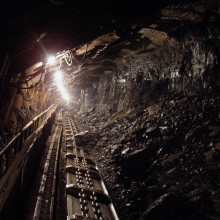
37:51 - From abandoned mine to pump storage station
From abandoned mine to pump storage station
Ashley Grohn, Mott MacDonald
Another way to store energy is to use gravity. If you use electricity to push something up a hill, you’ve given it gravitational potential energy and you can get that energy back by letting the thing roll back down the hill. If you do this with water, you’ve got the basis of what’s called a “pump storage hydroelectric system”, and this is what engineers have been able to do in one part of Queensland in Australia. In a world first, they’ve turned a flooded abandoned mine pit at Kidston into a system that uses solar energy to pump water out of the mine pit during the day to provide power for the nearby town at night. Mott MacDonald’s Ashley Grohn told me how it works…
Ashley - The Kidston project converts a 100 year old gold mine and repurposes it into a gravity hydro pump storage project. It's a fascinating project because the mine workings left a 300 metre pit in the ground which, for reference, now that I'm sitting in London, is about the height of the Shard. Over time, it has filled with water and what the project does is it uses that 300 metre height differential to store energy in a top reservoir and generates energy through turbines, dumping the water into the lower reservoir. Then, it recycles the water back up to the top reservoir to store it so that it can be used on a daily basis.
Chris - Is this an open-cast pit, or are we talking old mine workings, tunnels, etc.?
Ashley - It is an open-cast pit and the spoil left from the mine workings has created the upper reservoir and the 300 metre deep pit is the lower reservoir for the pump storage scheme.
Chris - And how big is that pit then?
Ashley - If you were a golfer, it's about a driver, approximately 300 or 400 metres - depending on how good you are at golf -across. If you can, imagine a conical shaped pit in the ground.
Chris - How much water is in there?
Ashley - It's in excess of 3000 Olympic swimming pools and the pump storage scheme basically pumps 2000 Olympic swimming pools up the hill over an eight hour period. Then, it can flow the same quantity of water down through the turbines to generate the power in an eight hour period.
Chris - I presume that the rationale for doing this is you could use electricity that you've produced in a green way to power those pumps. So, you're basically using renewables to push the water uphill and store that energy as gravity. Then, you can turn the taps on when you want that energy back when the sun isn't shining or the wind isn't blowing?
Ashley - That's absolutely correct, Chris. In Australia in particular, we have excess solar power generated during the day, so there is excess and very cheap solar energy to pump the water up the hill. Then, when everybody comes home of an evening and switches on their air conditioning in Australia, or boils their kettle in the morning, we can generate power from that water stored during the day to meet the needs of consumers during the night and the morning peaks.
Chris - How much energy will this thing put out? How powerful is it?
Ashley - In technical terms, it's a 250 megawatt scheme and can generate for eight hours. As a point of reference, that's basically enough to power 100,000 homes.
Chris - Right. When those people come home from work, this thing just basically turns on and runs all night. And so they've got power coming from this project all night?
Ashley - It has the potential to run all night. That's correct. Really, its primary purpose is, as we are retiring conventional coal fired power plants, there is potential for pump storage and even bigger projects than this in Australia, basically to keep the lights on and keep industry moving that works on a 24 hour cycle.
Chris - I suppose one other benefit here, you mentioned coal, is that traditionally when people have turned the TV on and then the adverts have come on and they've put the kettle on, or their favourite programme finishes and they put the kettle on, or there's just anticipation of people coming home in the evening and putting the air con on, they have to turn the coal fired power stations on an hour or more before they want that surge because it takes that long to heat things up. Presumably, yours, because the water is sitting there ready to go, it's just a press of a button and you're up to full output instantly?
Ashley - That's a good analogy, Chris. Whereas a coal fired plant will take hours to heat up, a pumped hydro scheme can basically go from zero to full output in one to two minutes.
Chris - How much does it cost to implement? Is this something which is a realistic prospect or do you need very specific conditions to make something like this work?
Ashley - Yes. At the moment, when we look at the energy trilemma - that balance between sustainability, energy security, but also importantly price - especially in the Australian market, you really do need a pump storage scheme that works in your favour economically, for it to be comparable with other technologies. That was the beauty of the Kidston project because, essentially, the big holes were already in the ground and there was already significant infrastructure at site including actually a solar farm that had already been built. It economically stacked up and it is the first project in 40 years built in Australia in terms of hydro and it is the first project that has actually been privately financed.
Chris - I presume one could now take the blueprint for doing this because you must have data to die for in terms of how to implement this, how it works, what the pitfalls are, literally as well as metaphorically, in terms of being able to extrapolate this, upscale it, downscale it and distribute it across the world. There must be lots of places where this would be an ideal fit.
Ashley - Absolutely. There are a lot of learnings, especially when you are looking at repurposing an old mine workings. Certainly, the international hydro association has been looking at this, as well as most countries globally, looking at the opportunities. There is absolutely no shortage. In Australia alone, there are literally thousands of potential opportunities for pump storage that have been identified.
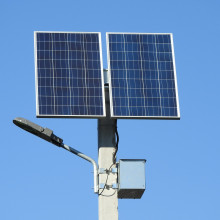
44:41 - Should every house have a battery?
Should every house have a battery?
Chris Jardine, JoJu Solar
Increasingly, homeowners are adding solar panels to the roofs of their houses to help offset their bills. The problem is that - during the day when it’s sunniest and their system is generating most of its output - most people are not at home. So they can’t so easily run the washing machine, charge up the car or put the hot water on. And although you get paid to export your homemade electricity onto the grid, the rate of payment is much lower than you have to pay when you buy that electricity back off the grid at night when you are at home and need the lights on. One way around this is to install a battery system that stores up what you generate during the day and then powers your home with that energy through the night. But how practical is this, what’s involved, and do the numbers stack up? Chris Jardine is a founder of JoJu Solar, who supply these systems, and previously he ran a research group at Oxford University looking into solar energy and microgeneration...
Julia - How do these systems work?
Chris - It's comparatively simple. A battery system will be installed alongside the solar panels in your house, connected into your main fuse board. And when it detects that there's an excess of solar energy being produced by the solar panels, it will charge up that battery. And similarly, if it detects that there's a higher load in the house and that the home wants to import energy from the grid, it will discharge that battery to balance that off to zero.
Julia - And how much energy can be stored in these batteries. Say it's a really, really sunny day and you've got sun on those panels all day. How much can you store up?
Chris - Batteries come in a variety of sizes. But let me give you an example of the Tesla power wall, which is probably the most popular battery being installed in the UK. The Tesla power wall stores 13 and a half kilowatt hours of electricity, which compares to the demand of an average home of around about 10 kilowatt hours. So Tesla power will be installing you roughly a day's worth of electricity in that battery. Smaller batteries might be around about half the size, perhaps around about five kilowatt hours.
Julia - And what is the output? So say you've got a family of four and it's nighttime. So there's no sun, we're relying solely on these batteries, and everyone's got their gadgets out. Is this going to be a doable situation with this type of battery?
Chris - It depends on the size of the battery that you purchase, but certainly the Tesla power wall, which has a five kilowatt power output would be capable of meeting lighting, TV loads in the home, as well as major heating loads, like a kettle or an oven. Smaller batteries would have a smaller power output, maybe two or three kilowatts, and they may struggle to meet those peaks in demand that come from high powered heating appliances.
Julia - A problem with batteries is their lifetime. We have terrible phone batteries, which have got better over the years, but what is the lifetime of these batteries that will be installed?
Chris - We're seeing the typical warranties on these batteries being around about 10 years, which means that we probably expect their useful lifetime to be extending out around maybe 15 to 20 years. And certainly the data that's coming off some of these early battery systems that have been going in over the past five years or so, is that actually the batteries themselves seem to be holding up very well and not degrading too much.
Julia - And there's going to be an upfront cost for getting one of these batteries installed. So what is the payback period for this?
Chris - If you had asked me this question about a year ago, I would've said that the payback of a solar system on its own compared to a solar and battery system in the home would've been roughly equal. The battery itself would've had very minimal impact either way on the payback of that overall home energy system that you'd be putting in. The reason for that, as we've discussed, is obviously the benefit comes from the export payment for solar electricity, which is around about 5p per kilowatt hour, and the import price for electricity, which historically was sitting at around 15p per kilowatt hour. That difference is really what's provided the benefit, the financial benefits, of installing a battery, but obviously that has to be offset against the capital cost of the battery system itself. So historically we weren't seeing a lot of difference there, and we were seeing people installing batteries really for much more emotive reasons based around wanting to be more self-sufficient, wanting to be independent from the dirty electricity grid. Clearly the pictures changed over the last year, and now we're seeing electricity import prices up around 25 to 30p per kilowatt hour, then I think there is now a financial case for installing batteries, and that you would see solar systems with batteries incorporated into them giving improved payback periods compared to just installing solar on its own.
Julia - And just in the last 30 seconds here, with the current energy crisis has demand for these batteries at home gone up?
Chris - Demand for both solar and battery storage has gone through the roof really since last October, when people started getting worried about electricity prices. There was another big bump in March when the Ukraine crisis broke as well. And certainly at times we've seen demand for solar and battery systems running about 10 times normal levels at the minute.

50:46 - Flexible demand: when grid talks to fridge
Flexible demand: when grid talks to fridge
Sarah Darby, University of Oxford
Apart from just storing energy, another approach is to use it more effectively and in a more timely way. The load on our energy supply rises and falls all the time, meaning there are periods when we have a relative surplus and other times when we face a shortfall that necessitates switching on expensive - and carbon unfriendly - fall back systems. If we can make our energy systems more intelligent and flexible in their consumption patterns, we could make significant savings. But what does this involve, and is it realistic. Speaking with Chris Smith, Sarah Darby is at Oxford University’s Environmental Change Institute where she works on smart energy systems...
Sarah - This is one of the most exciting areas of energy research at the moment, I think. It's what Simon referred to at the beginning. It's about looking at the system as a whole and integrating demand with supply. We already have supermarket freezers helping with the power system by adjusting their demand, according to the available supply, using more when the wind's blowing and the sun shining. So we could see a time in the future when that would happen to domestic freezes and fridges as well. That I think would be quite a way down the road, but it has started already.
Chris - Would it involve then really intelligent devices that are informing the supplier, "this is what I am. This is how I sit in the peckin order of power. I'm a dishwasher I don't really need to run right now; or I'm a fridge. I'm not off my temperature. I'm okay. I don't need to fire up quite yet. I can wait." And then the supplier saying, "great. Could you just wait because, actually, I've got lots of other demand at the moment: there's a big train pulling out of central station, or something; grid's under load. Is that how this will work? It's sort of intelligent devices that feed back almost like a smart meter in everything.
Sarah - Yes, indeed. That's already starting to happen. So, for example, our washing machine, I can set it to, say, I want the wash done in eight hours or seven hours, before I go to bed. And then it will do the wash overnight. And it can do that at a time that suits the network. You can do the same when charging a car. Both these are flexible types of demand. You could do that with your dishwasher or your water heater. What you wouldn't want to do it with, of course, you wouldn't want the network interrupting your TV programmes or your cooking. And when you want to boil a kettle, you want to boil a kettle. So those types of demand aren't flexible, but quite a lot of types of demand. Are
Chris - You forgot about the most important one of course, which is radio programmes, like Naked Scientists that that would be ring fenced by, by definition of course. Sarah!
Sarah - I'm terribly sorry about that! Yeah. <Laugh>
Chris - But do we actually therefore need a rethink as to how our grid distribution systems work? Because at the moment we, we've got a sort of broad system where we just shove some power - if you've got a solar array on your roof or something - we just shove that power out into the ether and it goes somewhere. Is it actually the most efficient way to use it? Because that means potentially that the energy generated in my garden is ending up in Scotland via the grid. Is that the most efficient way to work? It doesn't strike me that it is. Would it not be better to rethink maybe how we've got power kept locally to minimise losses of long distance transmission, for example?
Sarah - Yes, indeed. Yes. You do want to be using power as locally as you, as you can. For the, for the very reason you said, and, and so matching supply and demand locally at the substation level. And if you can do that intelligently, it also means that if, for example, you suddenly get quite a lot of new supply or new demand in a local area, you don't have to dig up the road and put a lot of new copper wiring in the ground. You can match the supply and the demand locally.
Chris - And what sorts of benefits, if you sort of look on the back of an envelope of implementing this, what sort of benefits could we return by doing this?
Sarah - Well, there's the system level benefit. So everybody benefits from having a system that it is changing. It will cost to do it, but as Simon said earlier, keeping those costs as low as you can, but there are also ways in which customers can benefit by going on tariffs. That will mean they pay less. If they are prepared to let the system use their load flexibly at times, as long as it doesn't inconvenience,
Chris - You've done a bit of research on that. What do people make of surrendering control in that way? Are people fairly accepting of that?
Sarah - We came up with five Cs that help people to accept all this: comfort and cost, of course, connectivity - the tech has to work properly - control: they need user-friendly controls, and care. The last one, which people tend to forget, which is they need to have real human beings who understand this stuff and can explain it and can help them come to terms with it.
Related Content
- Previous Search and rescue rats
- Next QAnon










Comments
Add a comment